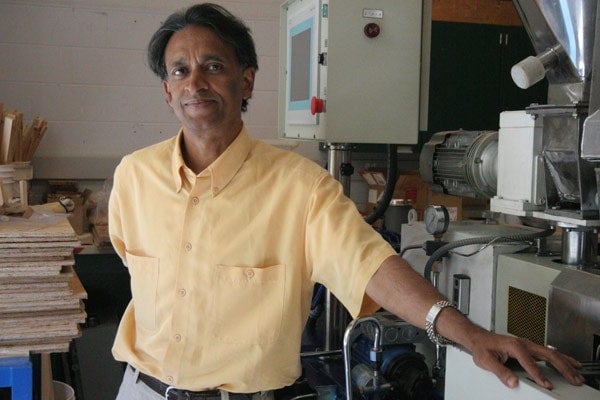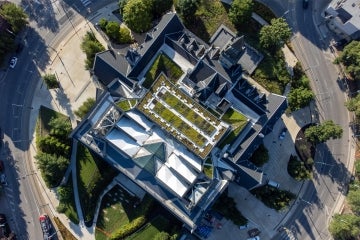
Future of forestry on display
Published: December 6, 2011
Does the future of forestry depend on the auto industry?
According to Mohini Sain, a professor at the University of Toronto’s Faculty of Forestry, it’s just one industry that could be a part of forestry’s future, but it also depends on innovation.
Sain says forestry today is less about cutting down trees and making products and more about conservation and economic growth.
“Forestry no longer means working as a conventional forester,” he said. “It’s a combination of engineers, foresters, microbiologists and economists; it’s a whole combination of interdisciplinary members.”
The results of such collaborations will be on display in an exhibition showcasing new bio-based technologies in the automotive industry, From the Farm to the Freeway, at the Canada Science and Technology Museum in Ottawa. Opening Dec. 8, the exhibition compliments the In Search of the Canadian Car exhibition currently on display.
As the title suggests, Farm to Freeway will take viewers through the process of turning raw plant materials into auto parts by showcasing the work of Sain and other researchers at AUTO21 Network of Centres of Excellence. AUTO21 is Canada’s automotive research and development program, helping to advance the country’s automotive sector through new knowledge and technologies. With more than 100 partners, AUTO21 currently supports nearly 200 researchers across Canada working on 39 different automobile-related projects.
For example, Sain and research partner Amar Mohanty, a professor of plant agriculture and engineering at University of Guelph, use forest industry waste -- the wood shavings and other debris leftover after turning logs into wood planks -- to develop bio-based plastics. In turn these plastics are used for making auto parts such as door panels and bumpers.
“Incorporating natural materials such as wheat straw into plastics can help reduce a vehicle’s weight and increase its fuel efficiency,” said Peter Frise, scientific director and chief executive officer (CEO) of AUTO21. “This exhibit is a chance for the public to see the results of globally-recognized Canadian research expertise up close.”
At one time the forestry industry was Canada’s largest economic resource. But over the past three decades, it has declined due to a lack of innovation in the sector.
“As we move from traditional forestry to a new world of forestry, conservation is the model,” Sain said. “We will cut even fewer trees and generate more economic productivity by fostering new, innovative technology connected to microbiology and nanotechnology.”
Denise Amyot, president and CEO of the Canada Science and Technology Museums Corporation is excited about the exhibition.
“The Canada Science and Technology Museums Corporation is really proud of this partnership with AUTO21,” she said. “As keepers of Canada’s scientific and technological collection, we encourage all Canadians to engage with their scientific and technological past, present and future.”



